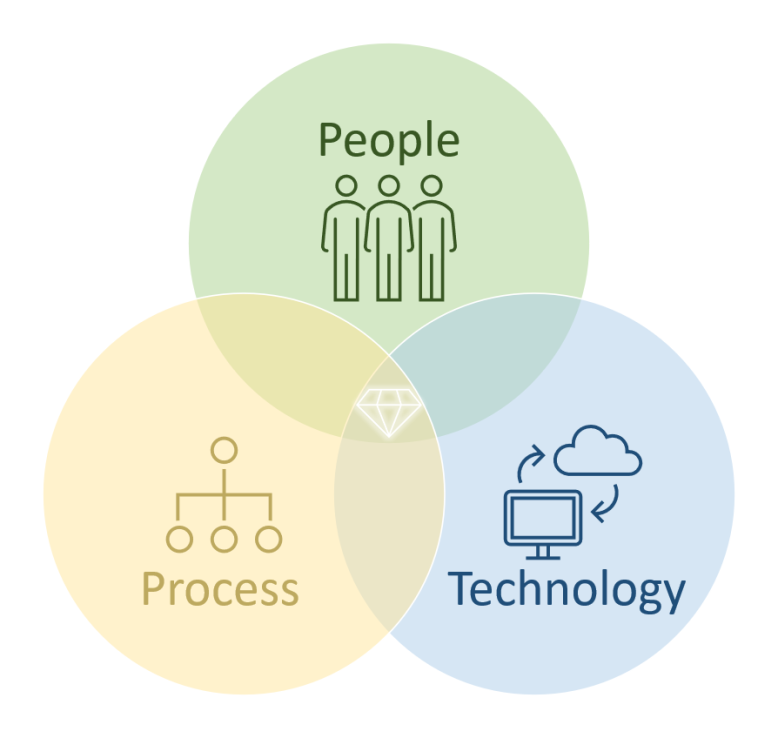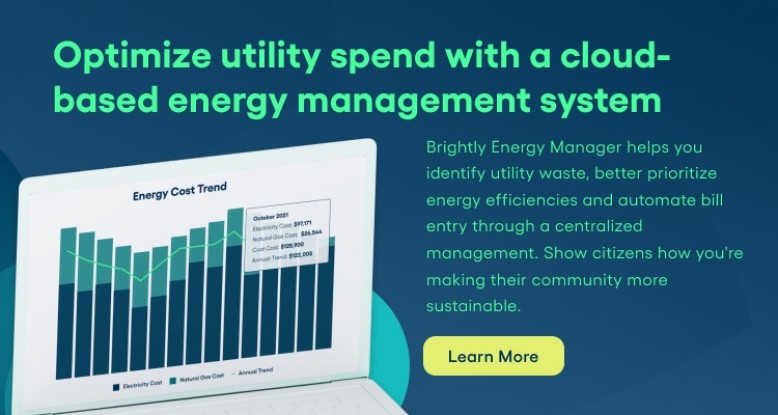Preparedness in Energy Management: Part 1

Here at Brightly, we recently wrapped up our annual user conference. It is always an engaging and insightful time with our clients. A week of giving and receiving tips and trends for success in energy management, asset management, capital planning, etc. This year was no different. Except... it was.
Even during this challenging year, we were encouraged to see our clients looking forward through the lens of the past – a concept we call contextualized planning. Our clients were thoughtful about questions like:
- What did responding to a global pandemic teach us?
- Where did it reveal gaps?
- Where did it highlight strengths?
- How can we bring all this together to move forward appropriately?
The importance of this thought exercise is, like it or not, there will be another [something]. Hopefully, it won’t be a global pandemic, but this [something] should find us more prepared than before.
With this in mind, we have put together this three-part blog series called Preparedness in Energy Management: Laying the Right Foundation. We will look at the three critical pillars of strategic energy management:
- People: Who is managing energy?
- Processes: How is energy managed?
- Technology: What do we manage energy with?

This framework might look familiar as it is common across organizations in every sector. But the fact is that good people need good processes, good processes need good technology, and good technology needs good people.
However, one big idea we want to ensure you understand is that your organization (or your department) will benefit from placing any increased emphasis on energy management.
Check out some clients who have reaped the benefits of good energy management programs:
Part 1 – People
We recently asked a panel of our clients – “What was one of the ‘positives’ you found during your organization’s response to the COVID pandemic?” One story gave an example where, because the organization had an already established a culture of conservation – down to the staff level – when maintenance technicians went to perform unoccupied shutdown procedures, they found that the majority of the building shutdown procedures had already been done at each facility prior to staff leaving as part of their usual end of week routine. It was like muscle memory!
Other stories told of discovering they had untapped resources in their people, people who genuinely care about utility and resource conservation in the facilities they work in.
Can you imagine this as a building operator – slowly discovering that a conservation army surrounds you?
Well, the good news… they do!
Let’s discuss three steps to laying the right “people foundation” to begin, or improve, your energy management programs: Identify, Empower, Celebrate.
Step 1: Identify
Wouldn’t it be great to have an organization like the one mentioned above, where you find yourself surrounded by a conservation army? The truth is you likely are.
Creating opportunities for multiple voices to speak into energy savings opportunities, many pairs of eyes to spot inefficiencies, multiple hands to turn off lights will yield exponential savings (not to mention take the sole burden off your shoulders).
- Action Item: Consider calling for the formation of a “green council.” This could be employee volunteers (or even volunteer membership in organizations like YMCAs and clubs) in the private sector. In the public sector, this could be employee or resident volunteers.
- Point of Focus: Monthly to quarterly meetings to review trends in utility data and brainstorm awareness campaigns for the organization at large.
Step 2: Empower
When consulting on empowerment, we like to think of this in two phases: first, from the perspective of providing empowered leadership and second, creating empowered employees.
Let’s look at empowered leadership. Here we’re talking to you, Ms. or Mr. Building Operator. In the context of energy management, do you feel confident? Qualified? If not, consider the value of furthering your expertise in the world of energy management – or hiring an energy manager. Some industry experts believe the staffing of a Certified Energy Manager can yield anywhere from 15-40% annual energy savings.
Next, consider similar professional development for employees. Studies show that providing professional development opportunities to your employees yields 15% higher satisfaction and 34% higher retention. Why not apply this same mindset to energy management? You’ll find countless energy management opportunities. Blogs, tradeshows, certifications like LEED (and CEM above) – all strengthen the ability for your department to act with expertise and retain this expertise longer.
- Action Item: Earmark a portion of your professional development funds for energy management this year – both for yourself and your staff.
- Point of Focus: Start small by attending free webinars and subscribing to blogs.
Step 3: Celebrate
Behavior is contagious. This recent study showed that, in sports, the teams that consistently celebrate together win more often. That’s probably not a new revelation for most, but we see the celebration of energy reduction strategies so often neglected in our organizations. Many times, it’s due to a lack of data and insights into conservation efforts.
The good news? You don’t have to compile a 30-page, multi-year report to check this box! Keep. It. Simple.
User-friendly solutions can help you create the foundation to achieve energy savings and highlight success.
Here are a few ideas that we’ve seen over the years:
- Monthly newsletters with a single graphic and explanation highlighting employees in specific facilities or on a particular floor
- “Employee of the month” awards being expanded to include some energy reduction practice in conjunction with regular job duties
- Allowing departments to keep a portion of their energy savings to reinvest in other projects
The critical takeaway is that whatever the win, big or small, celebrate and keep the momentum flowing.
- Action Item: Monthly to quarterly celebration of energy reduction
- Point of Focus: Start small by drafting a simple email highlighting the efforts of an employee or department – maybe include a gift card or catered lunch.
Conclusion
Prepared organizations save big when it matters, especially in energy management. Preparation is built on two key pillars: people and process. Identify, empower, and celebrate your people.





